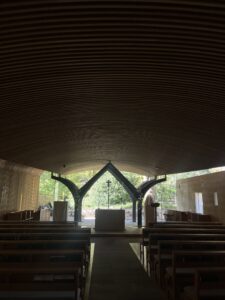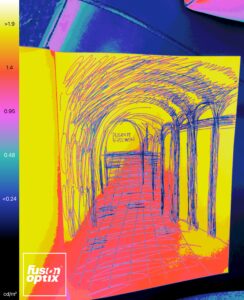Stoane Lighting Visit
Stoane Lighting is a lighting design and manufacturing company based in the United Kingdom. Specializing in high-quality architectural lighting solutions, Stoane Lighting is known for its innovative designs that seamlessly blend aesthetics with functionality. The company offers a range of lighting fixtures, including exterior and interior luminaires, with an emphasis on sustainable and energy-efficient solutions. Stoane Lighting’s products often feature contemporary designs that cater to both residential and commercial spaces.
Upon our visit at Stoane Lighting last Friday, I was left with a deeper understanding of what lighting can truly do for a space. Seeing the myriad of fixtures and lamps, lanterns and chandeliers and the time and research that goes into creating each of them, really put things into perspective for me. I was impressed by the scale of the projects they have worked on, as buildings such as St Paul’s Cathedral, Westminster Abbey, McEwan Hall or Harrods are part of their resume. It was extremely insightful to see the design process behind an object and then seeing it come to life. Furthermore, I never realised how many people and different expertises are needed to complete a lighting project. Just within the firm, there were lots of employees, all with varied specialisations. Their work ranges from tiny light fixtures to grand, heavy chandeliers, thus, they cater to all necessities.
For example, I found the lighting process for McEwan Hall very impressive, as the massive chandelier is their heaviest project to date, standing at 350 kg. The installation process was a laborious one as it took more than 40 hours. The entire project was incredibly meticulous , as changing the original, traditional luminaires inside the chandelier (Metal Halide) to LED engines ( integrated assembly composed of one or more light emitting diodes (LEDs) or LED arrays) took a lot of care and precision.
This visit was a very important one, as it broadened my horizons in terms of the possibilities within the design world.
Sources:
Fig1: McEwan Hall- www.edinburghphotowalks.com
Stoane Lighting Site Visit- photos taken by me (Daria).
www.stoanelighting.com
Williams, E. W. & Hall, R. (1978) Luminescence and the light emitting diode / by E.W. Williams and R. Hall. New York: Pergamon Press.
Held, G. (2009) Introduction to light emitting diode technology and applications / Gilbert Held. Boca Raton ; CRC Press.












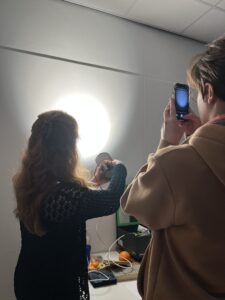











 My visit at the National Portrait Gallery was a wonderful experience, that provided me with great insight into the world of lighting . The various rooms in the gallery showcase a mixture of lighting methods, as some displays of art are artificially lit, some are benefiting from natural daylight and perhaps sunlight, although I did not get lucky in terms of the weather, whilst other rooms are both artificially and naturally lit. I found it really interesting how certain ceilings were open, with a glass square in the middle that could be left open or covered. I went on a gloomy day, thus the covers were shut, as the light outside was too harsh. I can imagine that on a sunny day, the ceiling is open and there is barely any need for artificial light. I find it that if we were to consider each painting individually, sunlight creates the most beautiful effect, as for example in oil paintings, all the brush strokes and small details are on full display and more visible than ever. Unfortunately, sunlight or daylight in general are hard to manage and control, as the light is constantly moving throughout the day. Thus, I believe artificial light can be the optimal solution in order to give equal attention to all artworks.
My visit at the National Portrait Gallery was a wonderful experience, that provided me with great insight into the world of lighting . The various rooms in the gallery showcase a mixture of lighting methods, as some displays of art are artificially lit, some are benefiting from natural daylight and perhaps sunlight, although I did not get lucky in terms of the weather, whilst other rooms are both artificially and naturally lit. I found it really interesting how certain ceilings were open, with a glass square in the middle that could be left open or covered. I went on a gloomy day, thus the covers were shut, as the light outside was too harsh. I can imagine that on a sunny day, the ceiling is open and there is barely any need for artificial light. I find it that if we were to consider each painting individually, sunlight creates the most beautiful effect, as for example in oil paintings, all the brush strokes and small details are on full display and more visible than ever. Unfortunately, sunlight or daylight in general are hard to manage and control, as the light is constantly moving throughout the day. Thus, I believe artificial light can be the optimal solution in order to give equal attention to all artworks. 





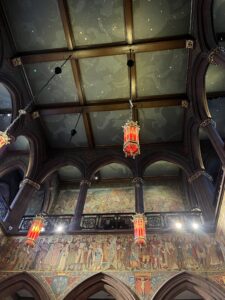

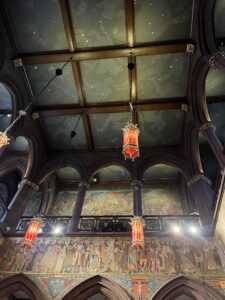
 In the first drawn room, the artificial light is white and harsh and it does not create a warm, cosy environment that would be needed for a library. However, the other drawn room is lit by hanging lanterns, that with the help of red glass, diffuse the light in such a way that it gives a warm effect. The floors and walls have an important role in creating the overall feel of the space in terms of light, as, the dark wooden floors and the dark walls in the library create a colder feel, whilst the light stone floors and the red brick walls in the main hall create a warmer palette overall
In the first drawn room, the artificial light is white and harsh and it does not create a warm, cosy environment that would be needed for a library. However, the other drawn room is lit by hanging lanterns, that with the help of red glass, diffuse the light in such a way that it gives a warm effect. The floors and walls have an important role in creating the overall feel of the space in terms of light, as, the dark wooden floors and the dark walls in the library create a colder feel, whilst the light stone floors and the red brick walls in the main hall create a warmer palette overall











